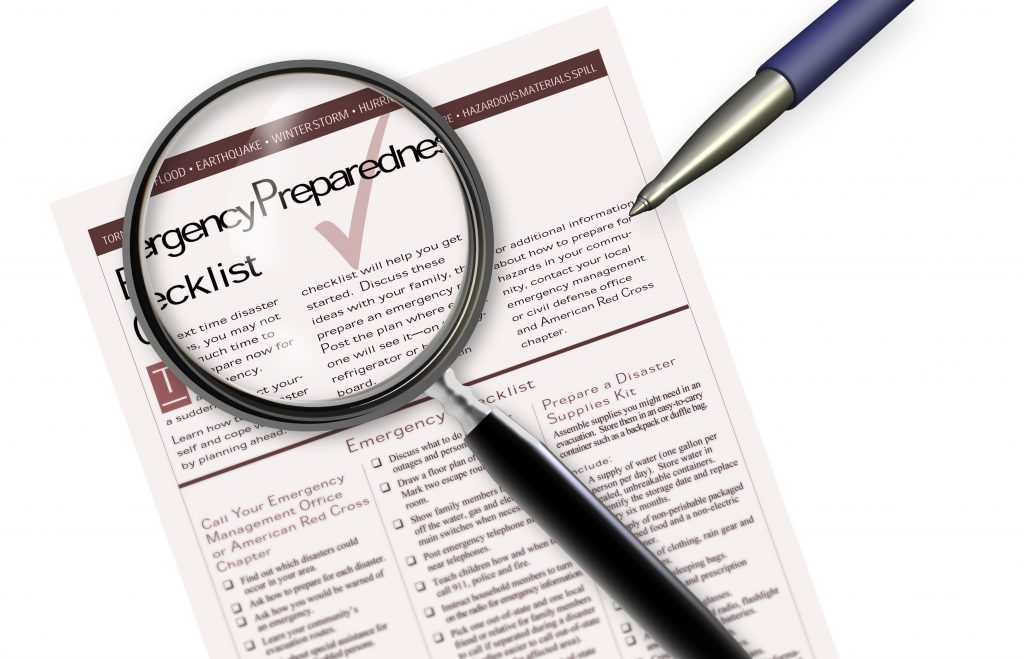More than 80% of Americans live in counties that have experienced a weather-related disaster. However, only 39% have created an emergency plan for their households. I know it is nearly impossible to plan when an emergency or natural disaster will occur, creating a plan may help keep your family safe in the event of one. The better prepared you are, the more comfortable you’ll be if you have to put your plan into action. If you find yourself in an emergency situation, send a text to your family to let them know you are safe. Texts are more likely to get through busy lines.
Know the Risks
No matter where you live, your region may be susceptible to one or more emergency situations or weather hazards. Here in Texas we are less susceptible to some than others including: flooding, tornadoes, hurricanes and the occasional earthquake. While some may provide some advanced warning, others may be more difficult to predict. Most of these occurrences may lead to extended power outages; however, if you live in an area where they are likely, having a plan will help you prepare for the next event.
Other emergencies can happen at any time, such as a house or building fire. Common causes include faulty appliances, electrical components and smoking.
Decide on an Emergency Meeting Place
Emergency situations are chaotic. In the midst of the confusion, it can be difficult to get in touch with loved ones. Decide on a meting place with your family ahead of time to reduce some of the initial stress. Choose three locations: one in the neighborhood, one in your town and one out of town, and make sure everyone knows how to get there.
Make a Plan
Make a plan that outlines all the information you’ll need to know in the event of an emergency. Not only will it help you get to a safe location, it’ll also allow you to let your loved ones know you are safe.
- Create a spreadsheet that includes:
- Names & nicknames of each family member
- Phone numbers
- Email Addresses
- Names of Doctors
- Places of work
- Schools
- Plan a safe evacuation route.
- If you’re home when an emergency occurs, you may have to evacuate with little to no notice. Select several safe evacuation routes, and make sure everyone is familiar with them.
- Assign roles.
- Have someone turn off the utilities, like water and electricity, while another person packs the important documents and another grabs pets. Giving everyone a responsibility will ensure nothing important is left behind.
Collect Important Documents
Organize important documents in one place, such as an accordion folder or fireproof safe, so you can easily grab them in an emergency. Sort them into categories: personal documents, financial, home, insurance, taxes, health/medical and employment. Also, keep any flash drives, removable hard drives or other storage media in the same location.
Practice
Now that you have a plan, be sure to review and practice it with your family regularly. The more familiar you are with your plan, the more prepared you’ll be in the event of an emergency. And, the more prepared you are the safer you’ll be.
Stay Connected
You can sign up for text alerts from your local emergency services to receive warnings and other up-to-date hazard information. Also, download weather apps to your smartphone to stay on top of dangerous weather-related activity.
For Corpus Christi Alerts you can sign up here.
Weather.com is just one of the many apps you can download on apple and android products. *
Remember Your Pets!!
Our pets are family members, too. Don’t forget to include them in your emergency preparation and evacuation plans. Visit ASPCA to get a free Pet Safety Pack, that includes a window sticker to let rescue workers know if your pet is inside or if has been evacuated.
Your Pet’s Emergency Kit
- 3-7 days worth of food and water
- Documents, such as copies of the pet’s medical records and current photos, just in case you’re separated.
- Sanitary items, such as garbage bags, litter and disposable trays for cats, and crate liners for dogs.
- Miscellaneous pet items, such as extra harnesses, collars, leashes, a travel carrier and a blanket.
To download an emergency plan template that you can tailor to your family’s needs visit www.ready.gov/make-a-plan
*I do not receive any compensation from any download that I recommend.
Sources: FEMA, Buffini & Company

